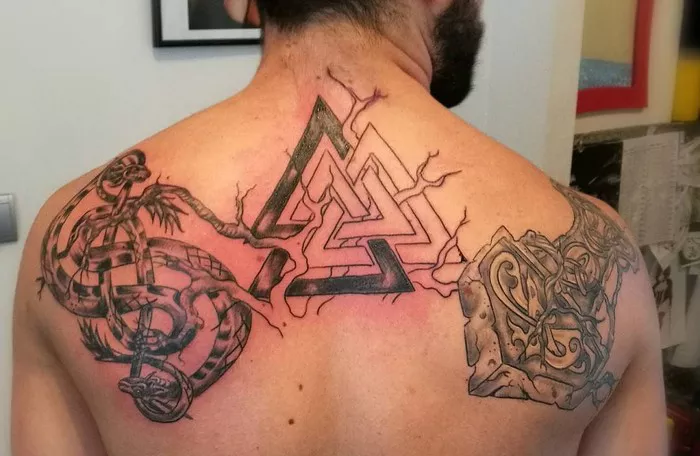Tattoos, with their intricate designs and deep symbolism, have been an integral part of human expression for millennia. Among the diverse cultures that have embraced the art of tattooing, Celtic civilization stands out for its profound connection to body art. Delving into the history of tattoos in Celtic culture unveils a rich tapestry of tradition, spirituality, and artistic expression that continues to captivate and inspire.
Origins and Early Practices
To understand the significance of tattoos in Celtic culture, we must first journey back to the ancient origins of the Celtic peoples. The Celts, a diverse group of tribes spread across Europe during the Iron Age, possessed a vibrant and complex belief system intertwined with nature, mythology, and spiritual symbolism.
Evidence of tattooing among the Celts dates back thousands of years, with archaeological findings revealing tattooed remains and artifacts adorned with tattoo motifs. The earliest Celtic tattoos were likely created using rudimentary tools such as bone or metal needles and pigments derived from natural sources like plants and minerals.
Symbolism and Spiritual Significance
Central to Celtic tattoos is the intricate interplay of symbols, each carrying layers of meaning deeply rooted in the culture’s spiritual beliefs and mythology. Knotwork, spirals, animals, and mythical creatures such as dragons and serpents adorned the bodies of Celtic warriors and shamans, serving as talismans of protection, strength, and connection to the divine.
The Celts believed in the interconnectedness of all living beings and the cyclical nature of existence, concepts reflected in the symbolism of their tattoos. Knotwork, with its endless loops and intertwining patterns, symbolized the eternal cycle of life, death, and rebirth. Spirals represented the journey of the soul, while animals like the stag, bear, and raven embodied traits such as courage, wisdom, and cunning.
Warriors, Tribes, and Social Status
Tattoos played a significant role in Celtic society, serving as markers of identity, status, and allegiance within tribal communities. Warriors adorned their bodies with tattoos to intimidate enemies and display their prowess in battle. Intricate designs etched across the arms, chest, and face conveyed a warrior’s bravery, lineage, and tribal affiliations.
In addition to warriors, tribal leaders and shamans often bore elaborate tattoos signifying their elevated status and spiritual wisdom. These individuals served as guardians of Celtic traditions and lore, channeling the power of the ancient gods through rituals and ceremonies.
Influence of Roman Conquest and Christianization
The spread of the Roman Empire into Celtic territories brought profound changes to the culture and practices of the Celtic peoples, including the art of tattooing. With the Roman conquest came new influences and societal norms that clashed with traditional Celtic beliefs.
Under Roman rule, tattoos became associated with marginalized groups such as slaves and criminals, leading to a decline in their popularity among the Celtic elite. Additionally, the spread of Christianity throughout the region brought about a shift in attitudes towards body modification, with tattoos being viewed as pagan symbols contrary to Christian teachings.
Despite these challenges, the tradition of Celtic tattooing persisted among rural communities and isolated pockets where the influence of Roman civilization was limited. Symbols and motifs passed down through generations continued to hold spiritual significance, preserving the essence of Celtic culture amidst changing times.
Revival and Modern Interpretations
In recent centuries, there has been a resurgence of interest in Celtic tattoos, fueled by a growing appreciation for the culture’s rich heritage and symbolism. The Celtic Revival movement of the 19th and 20th centuries sparked a renewed interest in Celtic art, music, and spirituality, inspiring a new generation of tattoo enthusiasts to explore their ancestral roots.
Modern interpretations of Celtic tattoos blend traditional motifs with contemporary styles, creating a fusion of old and new that resonates with people around the world. Tattoo artists skilled in the intricate techniques of Celtic knotwork and symbolism continue to honor ancient traditions while adapting them to suit individual tastes and preferences.
Conclusion
The history of tattoos in Celtic culture is a testament to the enduring power of human expression and creativity. From the ancient warriors who adorned their bodies with symbols of strength and protection to the modern enthusiasts who seek to reconnect with their heritage, Celtic tattoos serve as a bridge between the past and the present.
As we delve deeper into the history of Celtic tattooing, we uncover not just a series of designs etched onto skin, but a vibrant tapestry of tradition, spirituality, and identity. By preserving and celebrating this legacy, we pay homage to the resilience and ingenuity of the Celtic peoples, ensuring that their stories and symbols endure for generations to come.

